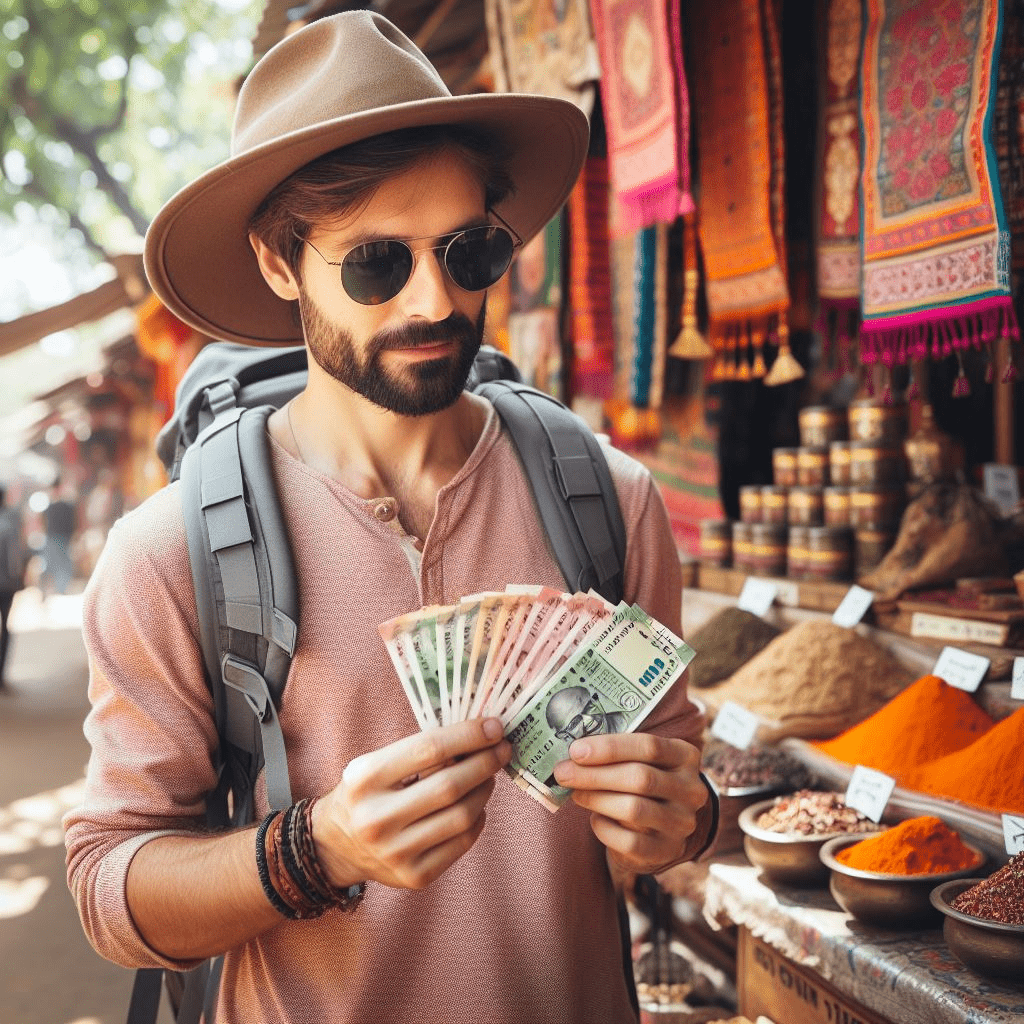Understanding how to manage money in India is key to a smooth and enjoyable trip. The Indian Rupee (INR) is the official currency, and knowing its ins and outs will help you navigate markets, restaurants, and transportation with ease. This guide provides practical insights and tips to maximize your travel experience in India.
Currency Basics
- Currency: Indian Rupee
- Symbol: ₹
- Code: INR
- Subunits: 1 Rupee = 100 Paise (though paise coins are rarely used in daily transactions)
Exchange Rates
The Indian Rupee’s value fluctuates against other currencies like the USD, EUR, or GBP. For the most accurate rates, use reliable online currency converters like XE.com or OANDA before your trip or while in India. Rates at airports and hotels are often less favorable, so plan to exchange money at banks or authorized exchange counters for better deals.
Denominations
- Banknotes: ₹10, ₹20, ₹50, ₹100, ₹200, ₹500 are commonly used. Lower denomination notes like ₹1 and ₹2 exist but are rare and mostly replaced by coins.
- Note: The ₹2000 note was discontinued in 2023 and is no longer legal tender.
- Coins: ₹1, ₹2, ₹5, ₹10 coins are widely circulated. Paise coins (e.g., 50p, 25p) are almost obsolete and rarely seen.
ITT Pro Tips
- Carry a Mix of Denominations: Always have a variety of notes and coins, especially smaller denominations (₹10, ₹20, ₹50). These are essential for street vendors, local buses, auto-rickshaws, and small shops where exact change is often expected.
- ⚠️ Warning: Larger Denominations May Not Be Accepted: Smaller shops, street vendors, and rural areas often refuse ₹500 notes due to a lack of change. In some states, even ₹10 coins may be rejected despite being legal tender, so prioritize notes over coins for smoother transactions.
- ⚠️ Candy Instead of Change: Small denomination notes and coins are often in short supply. Don’t be surprised if shopkeepers or vendors offer candy, gum, or small items as change instead of coins. Politely ask for cash change if you prefer.
- ATMs Are Widely Available: You’ll find ATMs in cities, towns, and tourist hubs. However, rural areas may have limited access. Check with your bank about international withdrawal fees and ensure your card is enabled for overseas use. Look for ATMs from reputable banks like SBI, HDFC, or ICICI for reliability.
- 💡 Pro Tip: Use UPI for Digital Payments: India’s Unified Payments Interface (UPI) is a game-changer. Apps like Google Pay, PhonePe, or Paytm allow fast, secure mobile payments at shops, restaurants, and even with street vendors. To use UPI, you’ll need an Indian bank account or a linked international card (some services like Paytm support this). Setting it up can save you from carrying cash and dealing with change shortages.
- Credit and Debit Cards: Major hotels, restaurants, and malls in urban areas accept Visa, Mastercard, and sometimes Amex. However, smaller establishments and rural areas often operate on cash only, so always carry some rupees.
- 💡 Pro Tip: Exchange Money Wisely: Avoid exchanging money at airports or hotels due to high fees and poor rates. Instead, visit authorized exchange counters, banks, or use ATMs. Always compare rates and check for hidden fees. Carry a small amount of USD, EUR, or GBP as a backup for emergencies, as these are widely accepted for exchange.
- 💡 Pro Tip: Keep Small Notes Handy for Tipping: Tipping is common in India, especially in restaurants (5-10% of the bill), for drivers, or hotel staff (₹50-₹100). Having small notes like ₹20 or ₹50 makes tipping easier.
- ⚠️ Watch for Counterfeit Notes: Counterfeit currency is rare but possible. Check notes for security features like watermarks or the RBI logo, especially when receiving change in busy markets.
Additional Information
- Currency Management: The Reserve Bank of India (RBI) oversees the issuance and regulation of the Indian Rupee. All currency exchanges should be done through RBI-authorized dealers to avoid scams.
- Always Request Receipts: When exchanging money or making purchases, ask for a receipt. This is crucial for tracking expenses and resolving disputes, especially at exchange counters or larger stores.
- 💡 Pro Tip: Budget for Cash-Based Transactions: Many experiences in India, like street food, local markets, or entry fees to smaller attractions, are cash-only. Budget around ₹1000-₹2000 per day for small expenses, depending on your travel style.
- 💡 Pro Tip: Use Prepaid Forex Cards: For added convenience, consider a prepaid forex card (available from banks or services like Thomas Cook). These cards are safer than carrying large amounts of cash, widely accepted, and can be loaded with INR before your trip.
- ⚠️ Be Aware of Local Scams: In tourist-heavy areas like Delhi, Mumbai, or Jaipur, be cautious of unofficial money changers offering “great rates.” Stick to authorized counters and always count your money before leaving the counter.
Why This Matters for Travelers
India’s vibrant markets, bustling streets, and diverse experiences often rely on cash for quick, small transactions. From savoring street-side chai to haggling for souvenirs in a local bazaar, having the right denominations and payment options ensures you can fully immerse yourself without hassle. Digital payments like UPI are increasingly popular, even in smaller towns, making India a unique blend of traditional cash-based and modern digital economies. By preparing for both, you’ll navigate the country with confidence and focus on creating unforgettable memories.
Categories :


